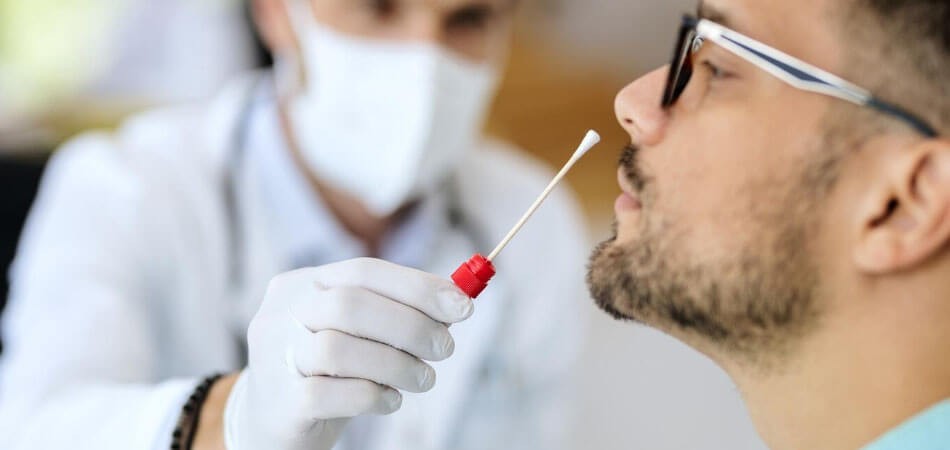All About PCR Techniques Principles Application and Know How for Students

What is PCR?
PCR stands for Polymerase Chain Reaction. PCR is one of most important techniques in Molecular Biology. PCR technique was 1st developed and perfected by Kary Mullis in 1983, which made it possible to detect the very low copy number of genetic material (RNA/DNA) by generating its millions of copies.
Principle of PCR
PCR is enzymatic amplification of genetic material in Lab. The Goal of PCR is to amplify the target of interest from the DNA that can be visualized and used for other molecular techniques.
Major Steps involve in PCR are:
Denaturation: Denature the double stand DNA into single stand DNA at 95oC.
Annealing: Single stranded DNA molecule binds to the primer at 55 – 65oC
Elongation: After primer binds to the already existing DNA, Thermostable Polymerase enzyme binds to the primer at DNA binding site and then begins to amplify the template DNA by adding nucleotide from the solution. This step happens at 72oC
Above 3 Steps is repeated for 30 to 35 times result in million-fold increase in the amount of DNA in 1 to 2 hr.
Applications of PCR
- Diagnostics: PCR techniques are used for the detection, screening, or diagnosis of various genetic (Albinism, Cystic fibrosis (CF), Down syndrome) and infectious disease (Covid-19, HIV, HCV, HBV MTB and other). PCR is able to detect the broad spectrum of disease-causing pathogens or new evolving variants of bacteria and viruses. PCR also has the advantage of higher and improve sensitivity and specificity over the routine methods for pathogen detection such as bacterial culture, virus culture, serological diagnosis, and enzyme-linked immunosorbent assay (ELISA)
- Treatment: It helps in monitoring the disease progression and treatment efficiency. It is also plays an important role in various treatment such as gene therapy and CRISPER
- New born genetic screening test: It’s also helpful in detecting the possibility of genetic disease happing in new born (New born genetic screening test)
- Forensic Science: Genetic fingerprinting techniques which also utilize PCR to identity the criminal from the sample collected from crime scene. Paternity tests to identify the child parents.
- Research: Gene expression study, gene mapping, phylogenetic analysis
Importance of PCR for Students
- Many advance techniques in molecular biology such as Real-Time PCR, Sequencing and Next Generation Sequencing are commonly used in research and healthcare industry, all revolve around the PCR techniques, and this makes it most important skill to acquire in the field of molecular biology.
- This technique is most commonly used in Molecular Biology lab, Biotechnology lab, clinical and academic research and Health care industry for disease research and prevention, for biological important product innovation, drugs production.
- If you want to pursue a career in any of the above field, PCR theoretical and practical Knowledge is must.
- You can understand the importance of PCR from the time of Covid pandemic; everybody has now heard and even gone through the Covid RT PCR Testing. The Covid RT PCR is rapid and more sensitive version of PCR technique. This signifies the importance of PCR to pursue career in medical diagnostic industry.
How to perform PCR in Lab
Sample Processing: PCR requires the trace amount of genetic material for testing. It either comes from patients’ blood or tissue sample or from microorganism culture, environment biowaste etc. Sample is kept at 2-4 degree C in sterilize condition.
Sample will be processed while wearing gloves, mask and eye protecting goggles in Bio safety cabinet Level II or III.
PCR Procedure:
DNA/RNA is isolated using manual (Solution-Based Systems and Column-Based Systems) or automated (Cartridge-Based Systems) protocol.
Small Volume of isolated DNA/RNA is taken and then, you could them mix in particular ratio with the entire component required to perform the PCR. The basic components are: DNA Polymerase enzyme, DNTPs (Deoxy nucleotide triphosphate), Buffer, Primers and florescent probe.
Whole the solution to transfer to the Automated PCR machine (Such as Bio-RadPCR, applied bio system PCR) with set cycling condition to amplify the desire region from DNA/RNA.
Result Analysis
Once the run is completed, Region of interest from DNA/RNA is amplify or not is visualize either on the GEL in Conventional PCR or directly on the PCR machine display with the help of fluorescent probe detector in Real Time PCR machines.
Things students keep in mind while performing PCR techniques
- Most samples that come for molecular testing via PCR are considered potentially infectious, so proper care should be taken while handling the sample in lab.
- Sample always should be processed in Bio safety cabinet with wearing proper personal protective equipment.
- All Biohazardous waste disposal procedure should be followed; steam autoclaving is a preferred method for all decontamination processes
- Disposal of contaminated materials according to laboratory’s Bio medical waste disposal procedures.
- Keep your work area disinfected.
- Avoid microbial and cross contamination of reagents.
- The work flow for PCR testing is lab is uni-directional; sample is moved in one direction from extraction area, master mix preparation area to PCR area. Sample should not return to the previous work station to avoid chance of contamination.
- After the thawing of reagents make sure to keep it back within 15-20 minutes or as soon as possible to -20 freezers.
- Note: Every pipetting step should be done with precision and sterile tips with aerosol barriers
- Care should be taken while handling pipettes while performing any step of PCR such as avoid touching you hand or pipette tips to any surface to avoid contamination.

